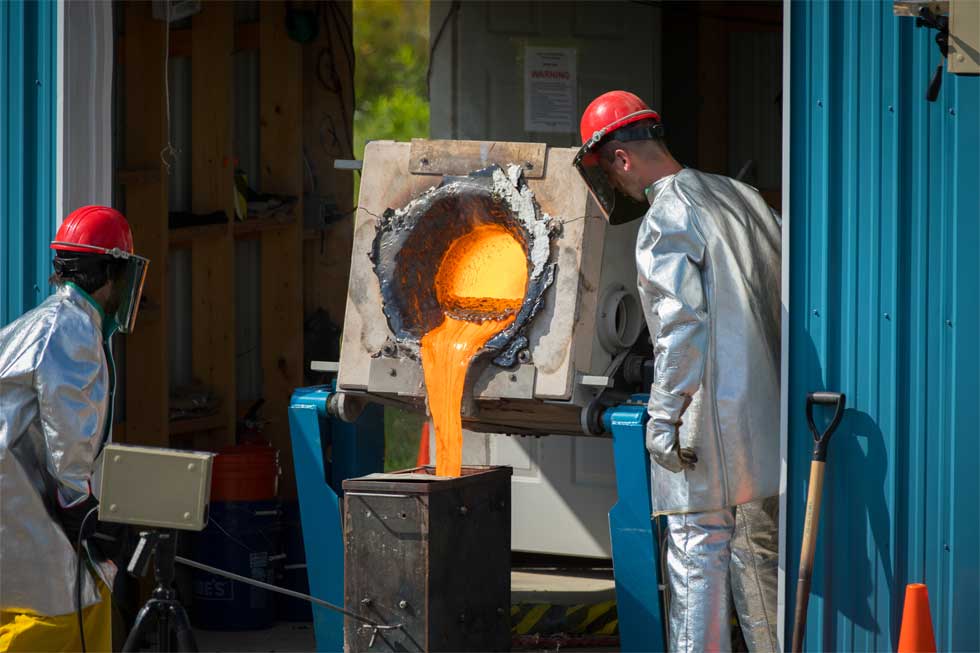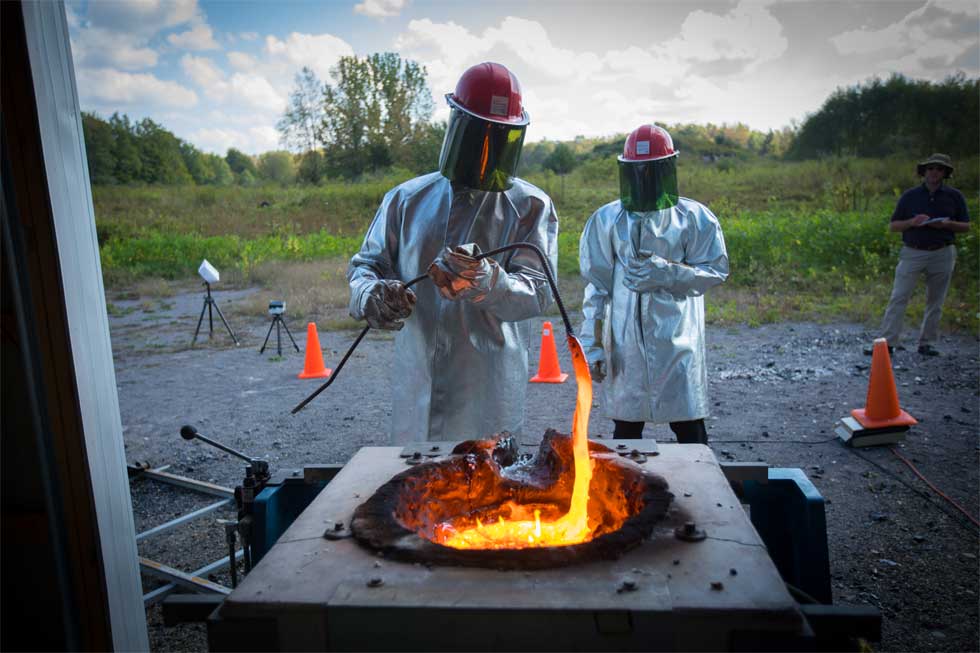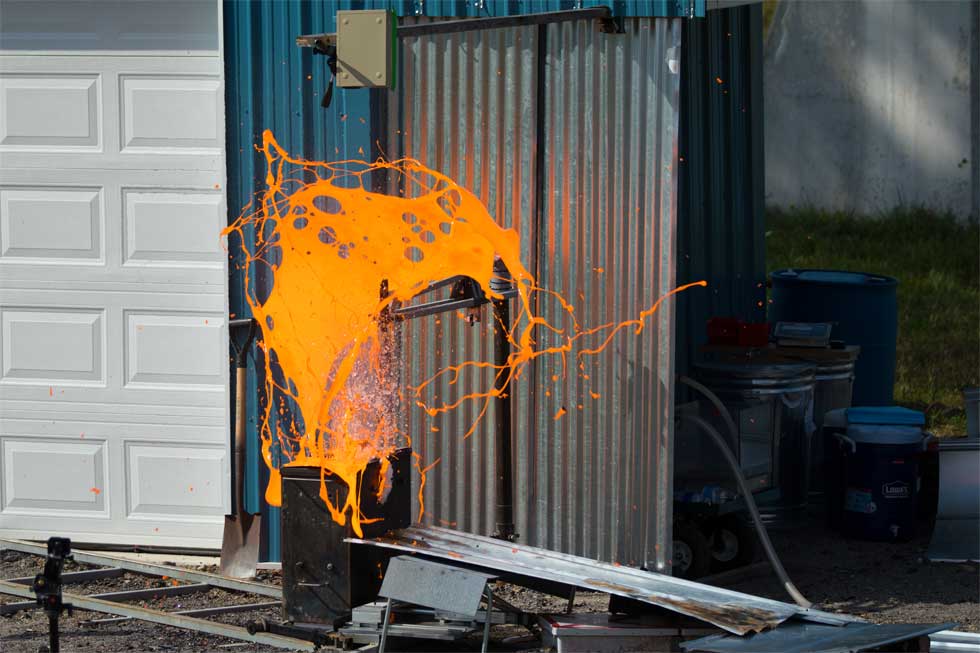UB Scientists Make Lava And Douse It With Water For Science
Scientists from the University at Buffalo or UB are working to better understand volcanos. The process of gaining understanding involves creating lava and then blowing it up with the goal of illustrating the physics of lava-water interactions. The interaction of water and lava can make volcanic eruptions more dangerous.
For their research, the scientists cooked up 10-gallon batches of molten rock and then injected the lava with water to gain understanding into the basic physics of lava-water interactions. Scientists note that these interactions are common in nature, but they are poorly understood. The team says that so far the number of tests conducted have been small.
That means more experimentation is needed for the researchers to draw any firm conclusions. What they have learned so far is that lava-water encounters can generate spontaneous explosions when there is at least a foot of molten rock above the mixing point. The team has run a series of 12 experiments. In those experiments, water was injected at speeds that range from 6 to 30 feet per second, and the reactions studied.
The lava in those experiments was held in insulated steel boxes ranging in height from eight to 18 inches. The basic things the team wants to understand is why the reaction between lava and water is sometimes very energetic and sometimes more subdued. The research is a long-term project aiming to improve the ability to asses the risk that volcanos near ice, lakes, oceans, and underground water sources pose to humans nearby.
The team admits the research is in the very early stages and they have several years of work ahead of them. The new study is building on previous research in the area and is conducted at the UB Geohazards Field Station in Ashford, New York. The manmade lava is made by melting basaltic rock in a high-powered induction furnace for about four hours until it reaches 2,400 degrees Fahrenheit.



